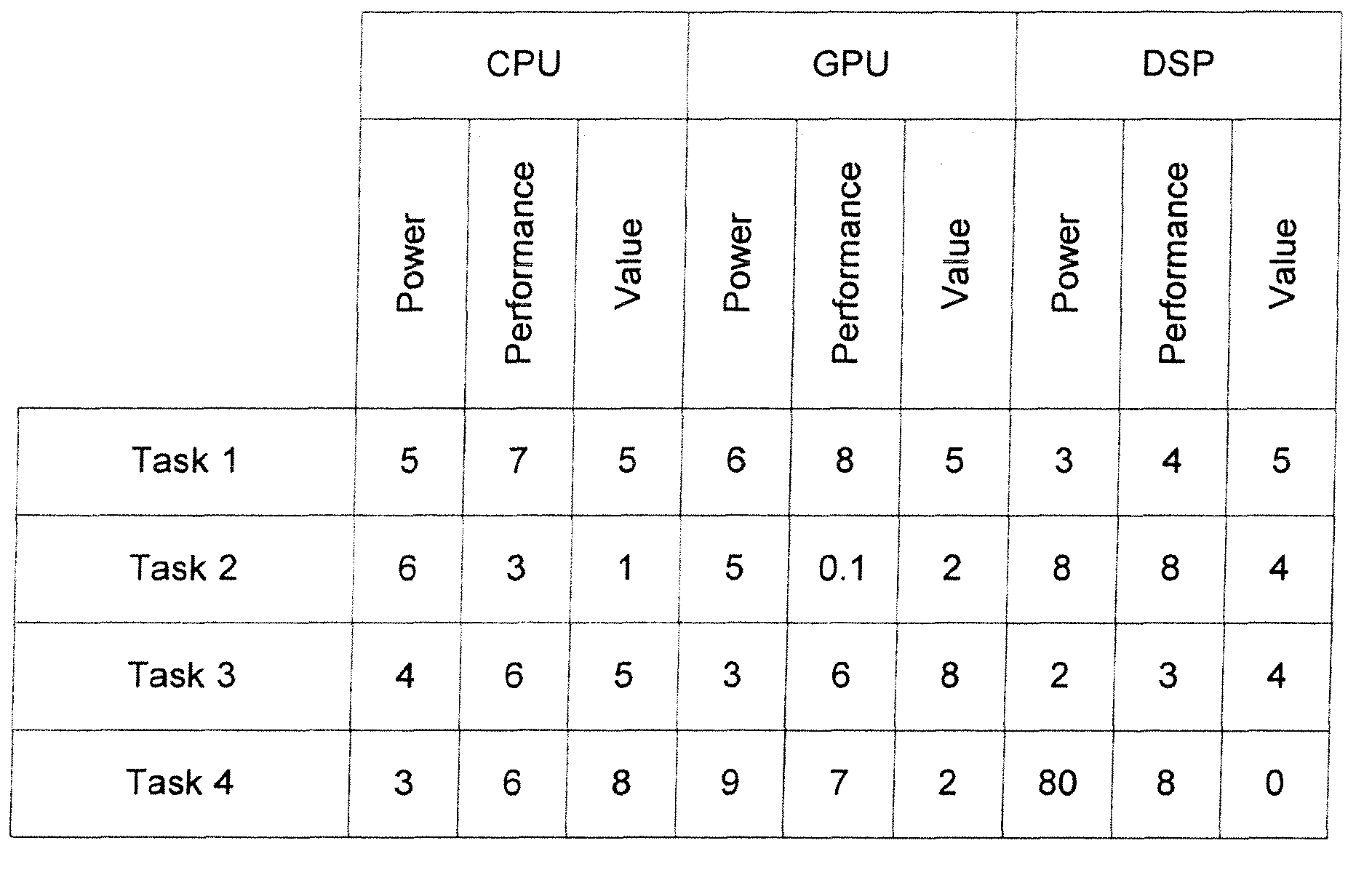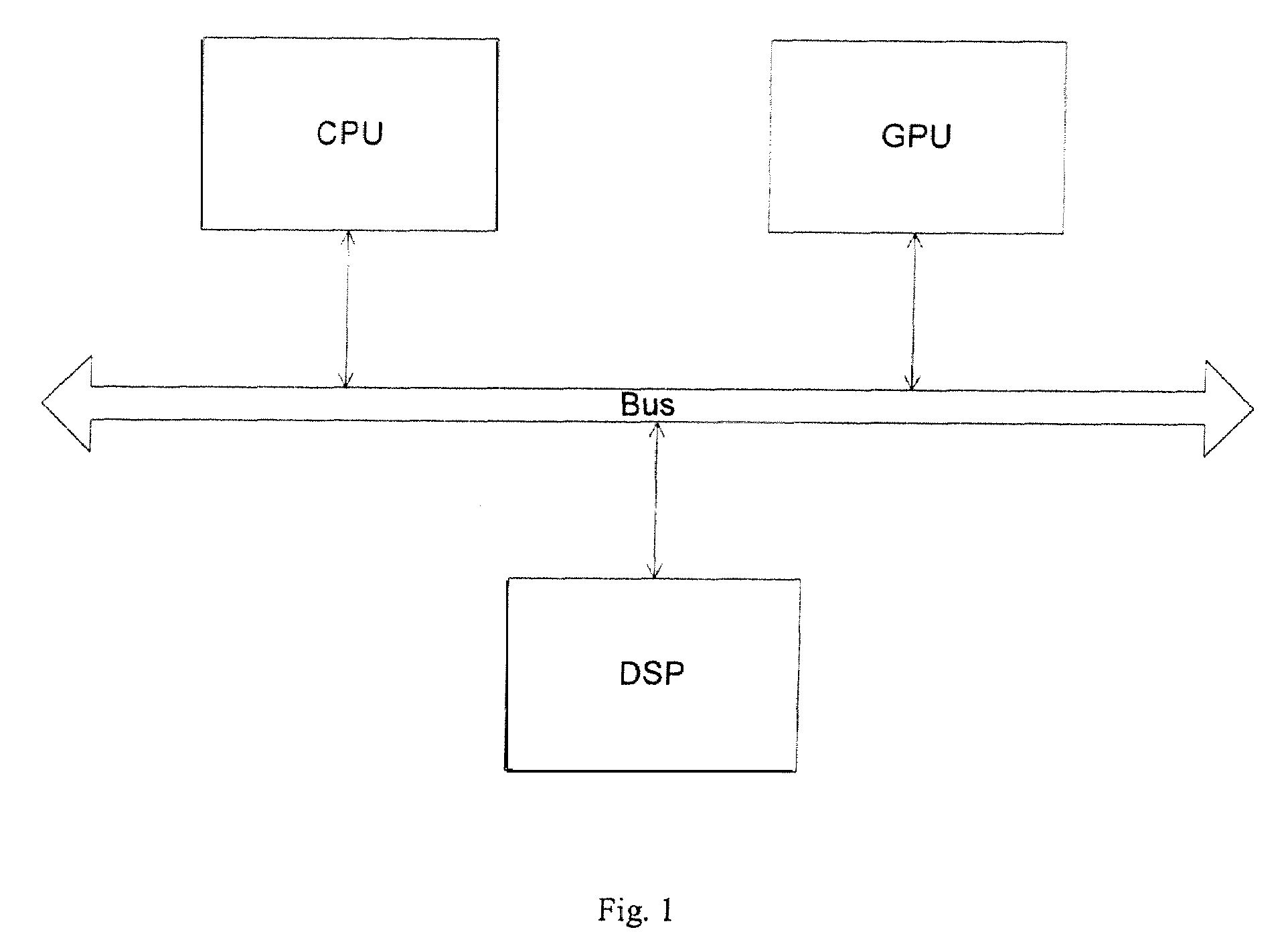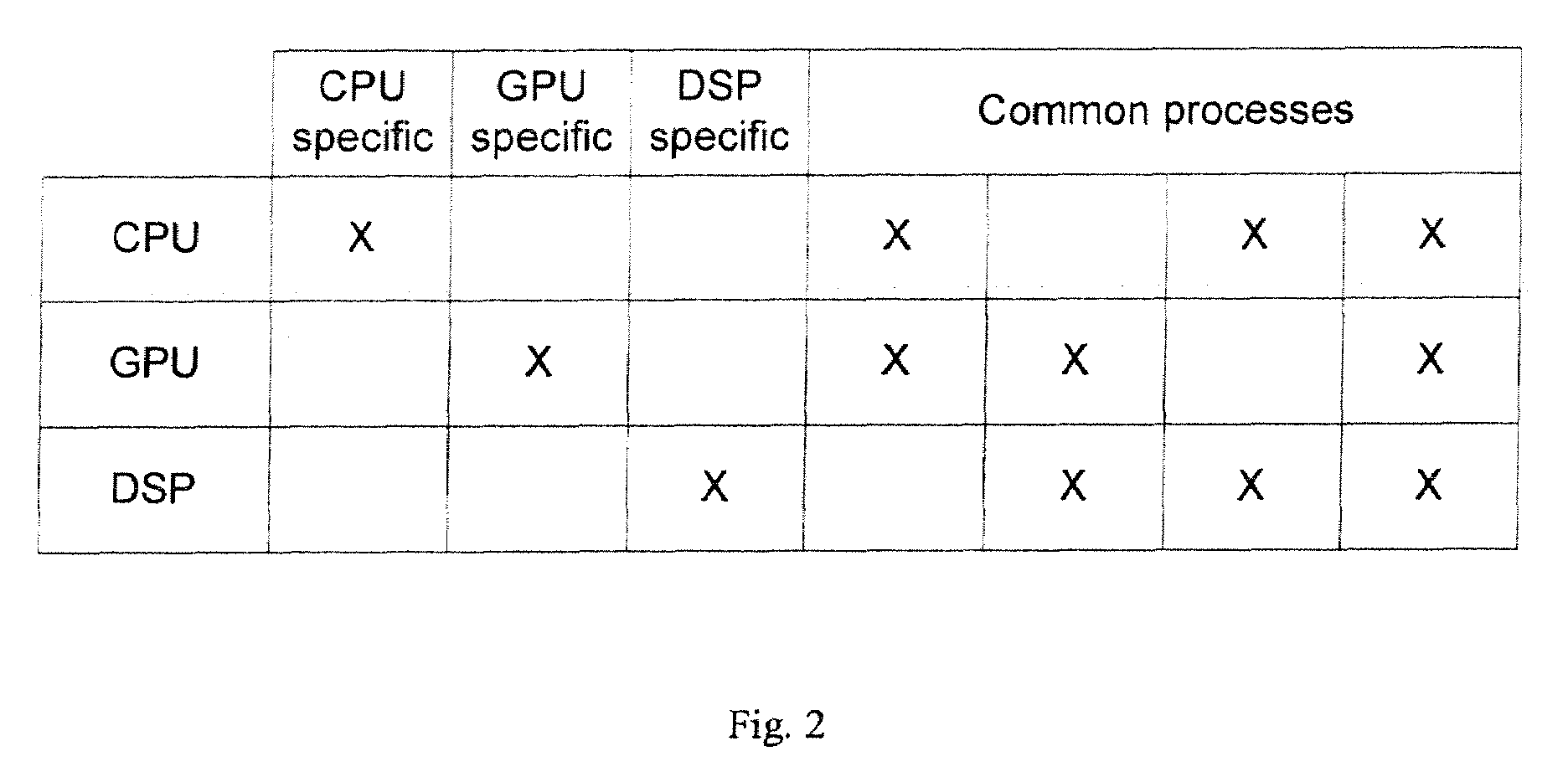Methods and apparatuses for load balancing between multiple processing units
a technology of load balancing and processing units, applied in the field of data processing systems, can solve the problems of limiting the system from performing at a continuous high performance capability with dedicated processing units, and tightening the power budget of such a system
- Summary
- Abstract
- Description
- Claims
- Application Information
AI Technical Summary
Benefits of technology
Problems solved by technology
Method used
Image
Examples
Embodiment Construction
[0028]The following description and drawings are illustrative of the invention and are not to be construed as limiting the invention. Numerous specific details are described to provide a thorough understanding of the present invention. However, in certain instances, well known or conventional details are not described in order to avoid obscuring the description of the present invention. References to one or an embodiment in the present disclosure are not necessarily references to the same embodiment; and, such references mean at least one.
[0029]Low power consumption is often a desirable goal for current computer systems, especially for portable computer systems, such as laptop computers, which have a limited battery output capability. Other types of data processing systems, such as special purpose computers, cellular telephones, personal digital assistants (PDAs), entertainment systems, media players, embedded systems, and consumer electronic devices, also often require low power co...
PUM
 Login to View More
Login to View More Abstract
Description
Claims
Application Information
 Login to View More
Login to View More - R&D
- Intellectual Property
- Life Sciences
- Materials
- Tech Scout
- Unparalleled Data Quality
- Higher Quality Content
- 60% Fewer Hallucinations
Browse by: Latest US Patents, China's latest patents, Technical Efficacy Thesaurus, Application Domain, Technology Topic, Popular Technical Reports.
© 2025 PatSnap. All rights reserved.Legal|Privacy policy|Modern Slavery Act Transparency Statement|Sitemap|About US| Contact US: help@patsnap.com



